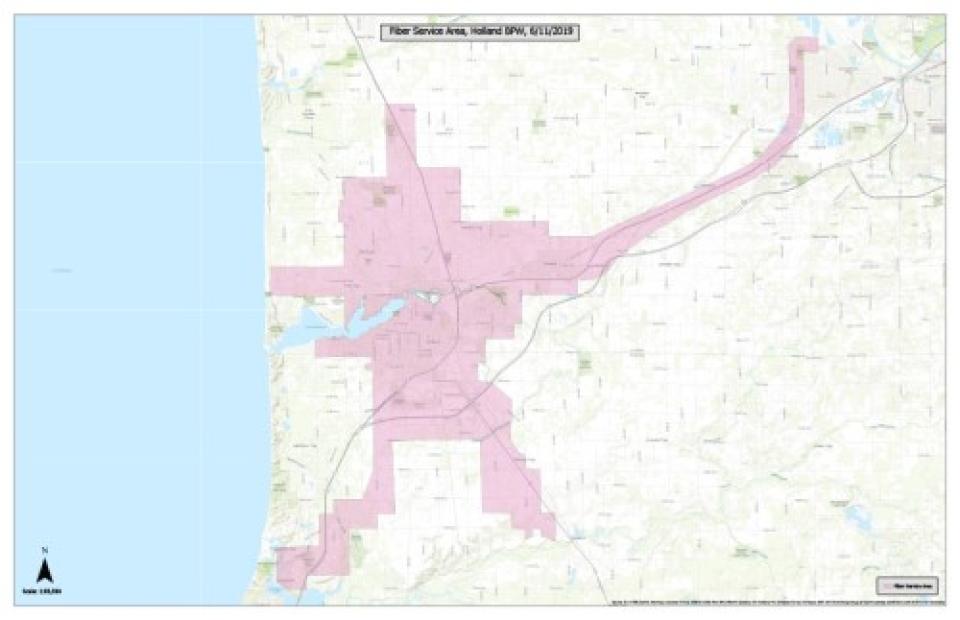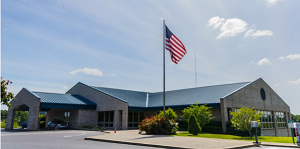
Fast, affordable Internet access for all.

In early August, the city of Holland, Michigan (pop. 33,000) voted to fund the construction of a citywide, open access fiber-to-the-home (FTTH) network. It’s the culmination of almost a decade of consideration, education, planning, and success, and builds on decades of work by the Holland Board of Public Works (HBPW) and city officials to build and maintain resilient essential infrastructure for its citizens. It also signals the work the community has done to listen to local residents, community anchor institutions, and the business owners in pushing for an investment that will benefit every premises equally and ensure fast, affordable Internet access is universally available for decades down the road.
In the Works

Holland has been formally exploring the need for better local connectivity since before 2016. It has been aided in this effort by the fact that the Holland Board of Public Works (HBPW), which already provides electricity, water, and waste water services, has been maintaining a small institutional fiber network that it first installed in 1992 (see current coverage in map, right, current as of May 2019).
Dickson, Tennessee (pop. 15,500) was the third municipal electric system to take power from the Tennessee Valley Authority after its creation in 1933, but the utility actually predates the regional electric generation system by almost 30 years. Today, it’s entering a new phase of life, parlaying its 117-year history of bringing affordable electric service into an $80 million fiber-to-the-home (FTTH) build that will see every household in its footprint (37,000 meters) get future-proof Internet access within the next four years.
A Cooperative in Municipal Clothing
Established in 1905, the very first Dickson Electric System (DES) customers received their power from a single 150-horsepower external combustion steam engine. DES upgraded its capacity in 1923, switching to two 150-horsepower oil-burning engines. A little more than a decade later, the TVA was established and DES took service, joining the maturing regional electric system and bringing its 650 customers and 50 miles of line into what would eventually be a group of more than 150 local power utilities almost a century later.

Today, Dickson Electric territory covers almost 800 square miles across Dickson, Hickman, Cheatham, Williamson, Humphreys, Houston, and Montgomery Counties (with the bulk of its customers in the first three), across about 2,600 miles of distribution line to 37,000 locations.

If we want to talk technical stuff on the Community Broadband Bits podcast, we know Eric Lampland is one of the best guys to call. Eric is Founder and Principal of Lookout Point Communications. Earlier this month, he and Christopher presented information about 5G at the Iowa Association of Municipal Utilities Telecommunications Conference. They took some time during the conference to sit down with the mics and have a conversation for episode 299 of the podcast.
There’s been scores of hype around the potential of 5G and, while the technology certainly opens up possibilities, Eric and Christopher explain why much of that hype is premature. 5G networks have been touted as an affordable answer to the pervasive problem of rural connectivity, but like other wireless technology, 5G has limitations. Eric breaks down the differences between evolutions of wireless technologies up to now and explains what needs they will fulfill and where we still have significant work to do.
Eric also helps us understand GPON and NG-PON2, the technology that much of Fiber-to-the-Home (FTTH) relies upon. He describes how the technology is evolving and how new possibilities will influence networking.
For information on 5G, we recommend you check out these resources from Next Century Cities:
Guest Blog: What Can Cities Do To Prepare for the Next Generation of Mobile Networks? by Tony Batalla, head of Information Technology for the city of San Leandro, California.
Next Century Cities Sends Mayoral Letter to FCC in Defense of Local Decision-Making, Releases New Market Research on 5G, Smart City Deployments - Read the full letter here.
Report: Status Of U.S. Small Cell Wireless/5G & Smart City Applications From The Community Perspective, by RVA, LLC Market Research & Consulting
This show is 33 minutes long and can be played on this page or via Apple Podcasts or the tool of your choice using this feed.
Transcript below.
We want your feedback and suggestions for the show-please e-mail us or leave a comment below.
Listen to other episodes here or view all episodes in our index. See other podcasts from the Institute for Local Self-Reliance here.
Thanks to Arne Huseby for the music. The song is Warm Duck Shuffle and is licensed under a Creative Commons Attribution (3.0) license.

Holland is expanding its pilot area for municipal Fiber-to-the-Home (FTTH) services in Michigan's Dutch outpost. To explain the past, present, and expected future of muni fiber in Holland, Broadband Services Manager Pete Hoffswell for the Board of Public Works, joins us in episode 269 of the Broadband Bits podcast.
The city has some 25 years of experience with dark fiber and open access with 6 ISPs serving some 200+ business locations. In recent years it has looked to expand that network, starting with a gigabit passive optical network (GPON) network in the higher density areas of downtown.
We discuss the city's decision to become a service provider and plans for further expansion, as well as how the city is reacting to increased investment from the existing cable and telephone companies.
In our discussion, we mention HollandFiber.org
This show is 30 minutes long and can be played on this page or via Apple Podcasts or the tool of your choice using this feed.
Transcript below.
We want your feedback and suggestions for the show-please e-mail us or leave a comment below.
Listen to other episodes here or view all episodes in our index. See other podcasts from the Institute for Local Self-Reliance here.
Thanks to Arne Huseby for the music. The song is Warm Duck Shuffle and is licensed under a Creative Commons Attribution (3.0) license.